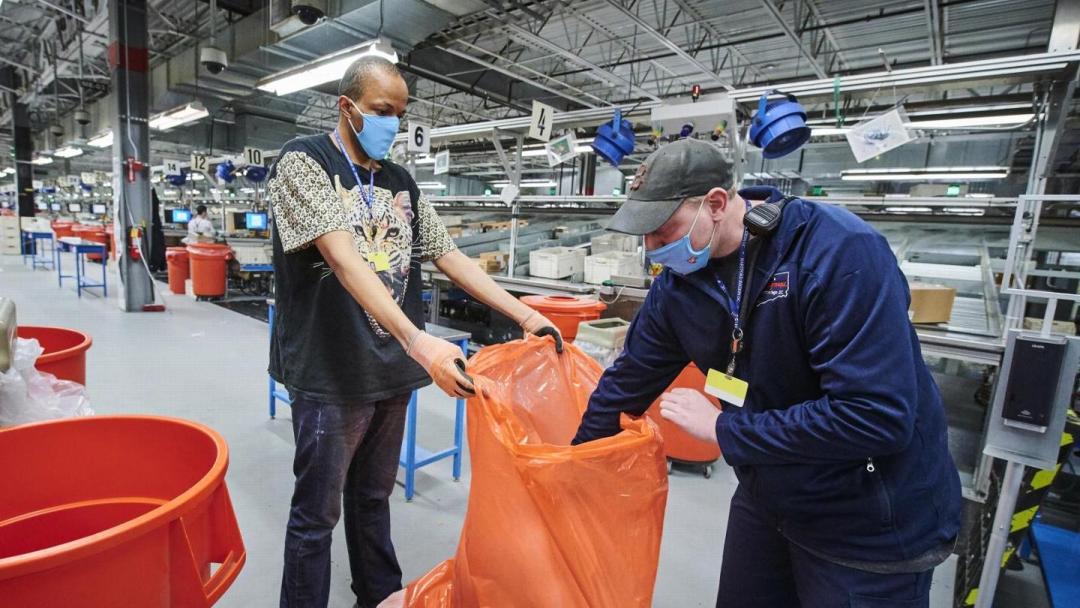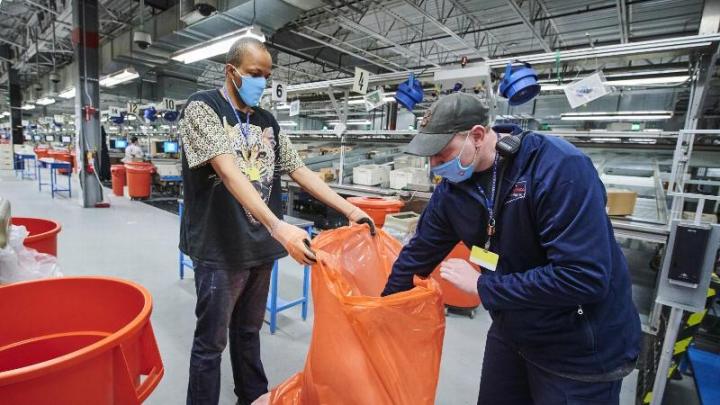Senior Advisor, Sycamore Partners
Community Impact
Where does extra inventory go, anyway?
For World Environment Day, we explore how surplus products are donated, liquidated or returned to vendors through the Green Box recycling program.


From unsold holiday merchandise to discontinued products, returned items and unsold perishable food, there are tons of product that retailers classify as unsellable every year.
And if you’ve ever wondered what happens to those products, you’re about to find out.
Senior manager of supply chain reverse logistics Desi Paoli-Pupillo was working in Walgreens corporate office as a market manager supervisor when she went on a site visit to a return center in Valparaiso, Indiana.
It was there that Paoli-Pupillo discovered that products inelligible for sale like toiletries, cosmetics and personal care items that were still usable could be going to landfill or processed through a hazardous waste program.
“I felt like people could use these products,” she says. “That’s when I questioned, ‘Can we do something differently? Why aren’t we donating?’ And people told me it was going to cost too much or take too much time or disrupt the supply chain. So I asked, ‘If I find a way to make this cost-effective and benefit our communities, can I pursue it?’ And I got the green light to test it.”

Boxes of toiletries, food, gifts and more donated to families through United Giving Hope, 2022.
She started by partnering with Feeding America and 545 Walgreens stores in the Woodland, California area. She had donation boxes placed in stores where team members could place donatable items, which were then picked up on a bimonthly basis by the nonprofit organization. She also developed a policy that vendors must either accept returned unsold products or approve it to be donated, rather than allow them to be destroyed or sent to landfill. Finally, she created a liquidation program through which unsold inventory is resold to third parties.
Through donating, returning or liquidating products, and by collecting tax benefits from partnering with nonprofits, the Green Box program, as it came to be known, was cost-free from its start in 2018.
“With the number of stores we have, a little bit of anything ends up being a lot,” says John Kotlarczyk. The senior director of ESG and waste reduction praises the Green Box program for extending the lifecycle of usable items. “Getting an unsellable product and putting it into the hands of people who need it is the best part of the program, and keeping it out of landfill is definitely an added benefit.”
The Green Box program began to pick up speed, and Walgreens partnered with more nonprofits like Feed the Children, NEAIR and United Against Poverty so more lifestyle and healthcare items could be donated directly to communities, including schools, near Walgreens stores.
To accommodate its growth, Paoli-Pupillo proposed situating the Green Box program inside distribution centers to better streamline the program’s logistics and allow for nonprofits to directly pick up donated items.
“We centrally collect Green Box items using a process my team and I created,” says Paoli-Pupillo. “We scan, process and sort each item to determine what’s eligible for donation versus liquidation. We have expanded our donation and liquidation partnerships to support the process and clear out unneeded inventory from the stores and distribution centers. The big win is it allows us to donate more inventory, keep our facilities clean and cover the costs to run the program through the liquidation dollars.”
Most recently, COVID-19 tested the Green Boxes recycling program when a surplus of hand sanitizer, masks and antibacterial wipes—to the tune of 2,000 truckloads—needed to be donated, as delays in delivery led to an oversupply. Additionally, ongoing supply chain issues have led to products with expiration dates, like vitamins, to be delivered without enough time to be sold. But that has made Paoli-Pupillo’s team nimbler and more capable of giving back to communities.
“We’ve been able to give rich boxes with all different types of products such as deodorants, toothpaste, food and vitamins to nonprofits,” says Paoli-Pupillo. “This past holiday season, we were able to take excess, unsold holiday toys and get them out to organizations when people came to pick up food and personal care items. My team worked really hard to make that happen. Moments like that make it all worth it.”
 Families preparing to pick up donated holiday boxes at a United Giving Hope event, 2022.
Families preparing to pick up donated holiday boxes at a United Giving Hope event, 2022.“What gets dumped in landfill causes problems for the planet and environment, and there’s clearly a link between environmental damage and impacts to human health. Healthy people need healthy environments. So in order for us to do our part to keep customers healthy, we have to keep our communities and the planet healthy,” says Kotlarczyk.
When it comes to future plans, Paoli-Pupillo hopes to expand Green Box to operate out of all Walgreens distribution centers beyond the 11 involved now, so the reach to local nonprofits can be stood up in every state. She’s also making it a priority to sustainably incorporate smaller nonprofits that can’t fund their own product pickups into the Green Box program. And finally, she has been in talks with major cosmetic companies to encourage even more product donation to divert more waste from landfill.
The Green Boxes program continues to grow every year, and with it, the benefits to people and the planet.